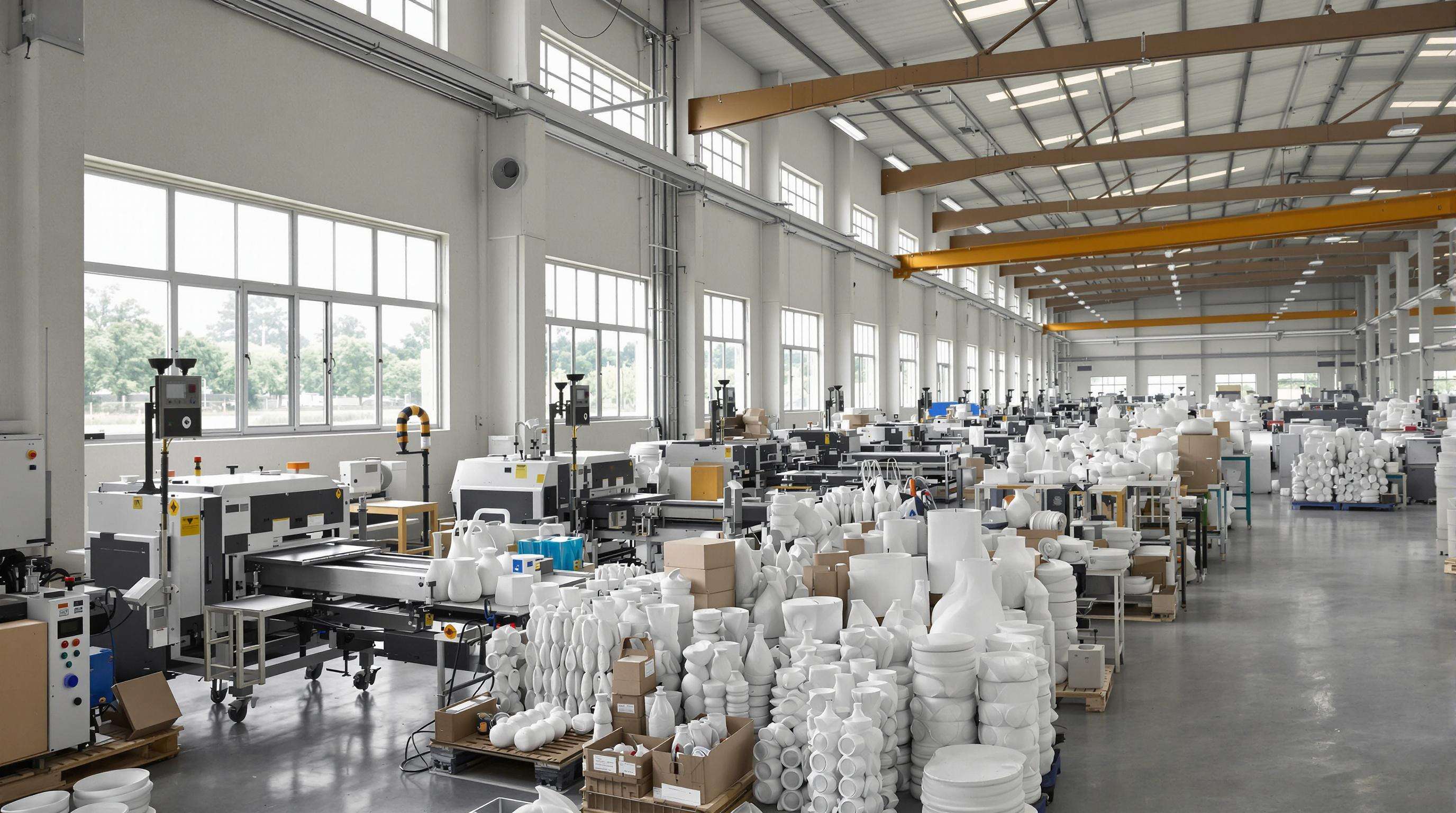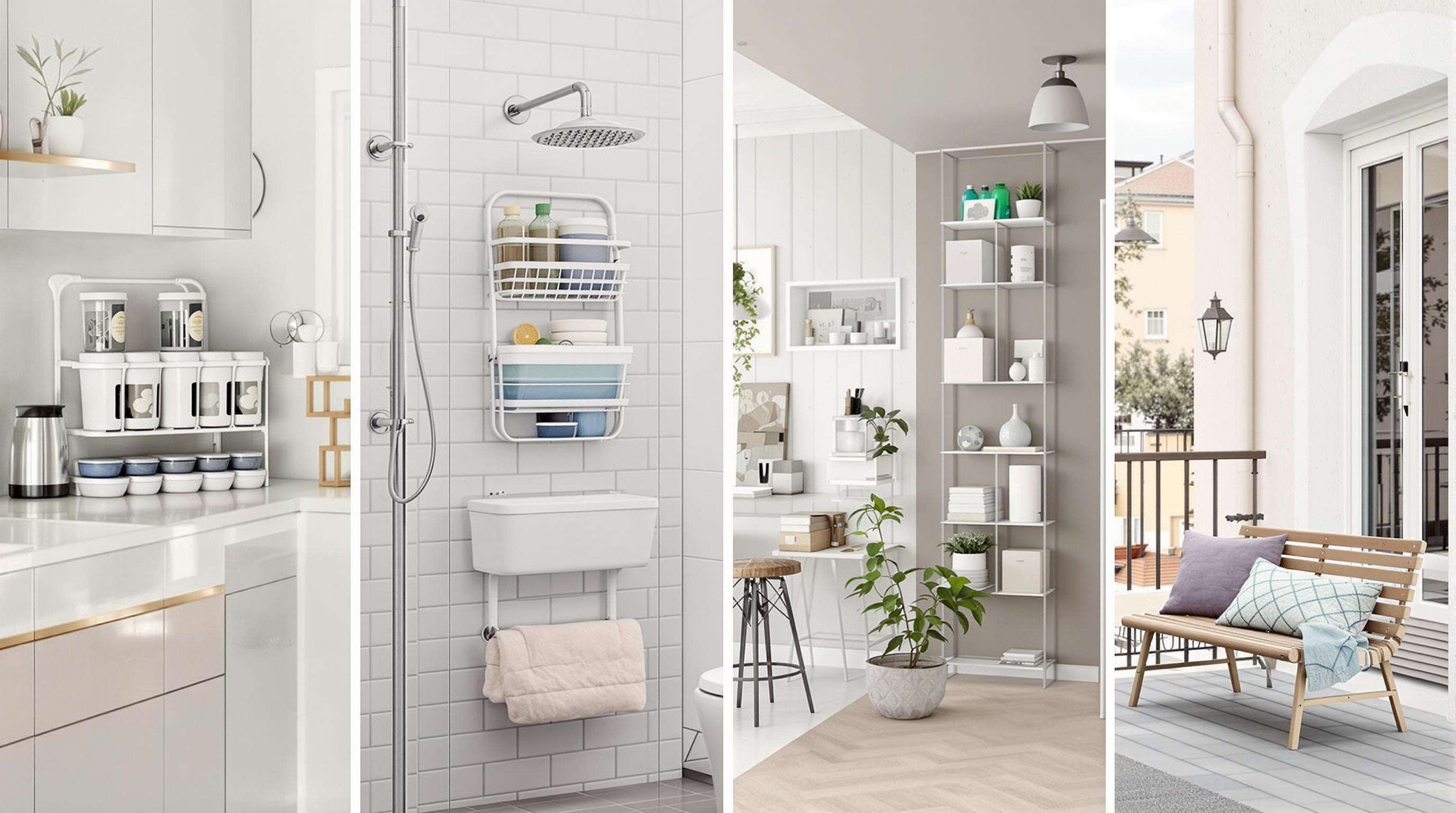Home accessories made via blow molding are basically hollow plastic items produced using a specific manufacturing approach. When creating these products, manufacturers start by melting down polymer resins until they become liquid plastic, which gets shaped into something resembling a tube called a parison. Then comes the interesting part where compressed air forces this parison against the walls of a steel mold, transforming it into seamless objects we see around our homes every day. Think about those storage containers that stack so neatly, decorative vases that don't crack easily, even some modern looking furniture pieces that look expensive but actually aren't. What makes this process stand out is how it maintains consistent wall thickness throughout while still allowing for intricate shapes. That's why many companies choose blow molding when they want to make lightweight yet sturdy household goods that can withstand regular use without breaking apart.
Today's blow molded products often incorporate tough materials such as HDPE and polypropylene copolymers. These substances stand up well against impacts, resist damage from weather conditions, and maintain their properties even when temperatures fluctuate. Some newer developments worth mentioning are fiber reinforced resins that can increase load bearing strength around 40 percent according to research published last year in Material Science Journal. There are also biodegradable options available now that keep their structural integrity for about five to seven years before breaking down naturally. Because of these improvements, manufacturers can create accessories that work just fine in challenging settings whether it's a damp bathroom environment or an outdoor space where they get direct sunlight all day long.
Blow molding started back in the 1940s when it was mainly used for making industrial containers. But by the 1950s, this technique made its way into home design thanks to those cheap holiday decorations people could afford. As years went by, designers really got into blow molding because they could scale production easily and work with all sorts of shapes. We see it now in everything from simple shelving units to comfy chairs that actually fit the human body right, plus those cool modular furniture sets that can be rearranged however someone wants. According to recent numbers from the Design Industry Report released last year, around two thirds of interior designers are using more blow molded items these days in their residential projects. Makes sense too since this method just keeps up with what people want both looks wise and how things function in real life spaces.

Blow molding is inherently resource-efficient, using 15–20% less plastic than injection molding (Plastics Engineering Journal, 2023). Precision air-pressure control minimizes material waste, and many modern facilities integrate solar-powered systems, reducing energy consumption by up to 40% in leading North American plants. These efficiencies make blow molding a sustainable choice for high-volume production.
Most blow-molded home accessories are made from PET or HDPE—polymers with well-established recycling pathways. A 2023 lifecycle analysis found these products remain functional for 12–15 years, cutting replacement frequency by 300% compared to wood alternatives. Their waterproof nature also prevents mold growth, contributing to their selection in 67% of eco-focused bathroom renovations.
Factories across the manufacturing sector are increasingly adopting circular economy approaches, often using closed loop systems that manage to recycle around 98 percent of their factory waste back into production. Some companies have started incorporating plant based materials as additives, which allows old products to break down naturally over time, typically taking between five to eight years depending on conditions. A recent industry analysis from 2024 shows that roughly 8 out of 10 manufacturers of blow molded household goods actually hit the targets set by the EPA's WasteWise initiative. This suggests there's real potential for businesses to grow while still being environmentally responsible, though many smaller operations still struggle with implementing these practices at scale.
Blow molded accessories just seem to fit right in with minimalist design styles. They've got those clean straight lines, simple color finishes, and shapes that really embody the whole "less is more" idea so many people talk about nowadays. What makes these items stand out is their smooth construction without any seams plus the way they look both practical and stylish at the same time. That combination works great in city apartments where folks want spaces that look neat but still get the job done. According to the latest Interior Design Trends data from 2023, more designers are picking these types of accessories for things like wall mounted shelves and those cool modular storage systems that can be rearranged as needed.
New developments in how pigments are mixed into materials mean companies can now match more than 200 Pantone colors exactly, which makes it much easier for designers to coordinate with existing color schemes in homes. The latest techniques in rotational molding have also made it possible to create different surface textures like matte finishes, metallic looks, or even stone-like patterns all within one manufacturing setup. What's really interesting is that these advancements let manufacturers switch between products seamlessly. They might start making bright colored storage solutions for bathrooms one day and then shift gears to produce more muted tones for living room pieces the next without changing equipment or processes.
An apartment renovation in Copenhagen shows just how well blow molded materials fit into Scandinavian design principles. Inside, there's this super light polyethylene entertainment unit that weighs about 32 percent less than regular MDF stuff. They even brought in those UV resistant patio chairs for indoor use, which looks pretty cool actually. And don't forget the nesting tables with built in wireless charging pads everyone loves these days. After finishing the place up, they tested the air quality and found VOC levels were around 45 percent lower compared to standard particleboard furniture. Makes sense really when thinking about both health concerns and what's better for the environment overall.
Today’s blow-molded polymers can mimic premium materials like travertine and brushed steel while retaining durability. Co-molding technology now integrates rigid structures with soft-touch surfaces in a single piece, enabling multifunctional designs such as decorative screens, lighting fixtures, and acoustic wall panels that blend form and practicality.

In the kitchen, blow-molded organizers provide seamless, non-porous surfaces that resist bacterial growth. Waterproof polyethylene containers and spice racks endure repeated dishwashing without degradation. Vertical dividers with antimicrobial additives help prevent cross-contamination, meeting NSF/ANSI 185 standards for food contact surfaces.
Shower caddies and soap dispensers benefit from blow molding’s hollow-core design, reducing weight by 70% compared to ceramic. Mold-resistant materials maintain integrity in high humidity, with studies showing 89% fewer microbial colonies than porous options like bamboo (Journal of Applied Microbiology, 2022).
Nesting tables and modular shelving units showcase the furniture-grade strength of blow-molded polymers, produced at 30% lower cost than traditional methods. Rotational molding enables smooth, seamless curves in media consoles capable of supporting up to 250 lbs without metal reinforcement.
Outdoor benches made from UV-stabilized HDPE endure temperatures from -40°F to 190°F without warping. All-weather planters with integrated drainage outperform terracotta in freeze-thaw cycles by a 3:1 margin—contributing to a 30% market growth in weather-resistant accessories from 2020 to 2023.
Urban spaces are getting tighter these days, which means people want stuff that takes up less room but does more. According to the latest Urban Design Survey from 2024, about two thirds of city dwellers put optimizing their space at the top of their list. That's why so many companies now rely on blow molding techniques to make all sorts of clever storage solutions. We're talking stackable bins, fold away chairs, and those neat little shelves that stick right onto walls without taking floor space. What makes this manufacturing method special is how it creates light weight items that look good too. Most folks living in apartments or smaller homes appreciate both practicality and appearance when they shop. And let's face it, around 40 percent of what gets bought in big cities lately probably comes down to just finding ways to fit everything into those tiny apartments we call home.
The market for blow molded home accessories has seen major growth as sustainability becomes more important to consumers. Eco friendly items make up about 30 percent of what's driving this sector forward since around 2020. Why? Well, most people care about materials these days. Around three out of four shoppers actually check if something is sustainable before making purchases for their homes. Plus, blow molding works really well with recycled plastics which makes it attractive for manufacturers looking to go green. According to the latest Sustainable Manufacturing Report from 2024, we can expect roughly 12 percent growth each year until 2030. This projection makes sense considering how companies are adopting closed loop systems that cut down on waste by almost half compared to traditional methods.
The younger generations are changing what people want from their living spaces these days. About two thirds of them really care about being able to personalize their home decor items and express themselves through aesthetics. Because of this growing interest, manufacturers have started using something called dual stage molding technology which lets them create those cool gradient effects and interesting textures on products without breaking the bank. Most interior designers we talk to mention blow molded items in their spec sheets these days too. The whole segment keeps moving forward as companies try to mix comfort and usability with those clean, simple looks everyone seems to love in modern homes right now.
What is blow molding used for in home accessories?
Blow molding is used to create hollow plastic items such as storage containers, decorative vases, and furniture pieces, ensuring consistent wall thickness and lightweight yet sturdy construction.
How does blow molding contribute to sustainability?
Blow molding uses less plastic, minimizes material waste, and facilitates recycling, making it a resource-efficient and sustainable choice for production.
What materials are commonly used for blow molded products?
Materials such as HDPE, polypropylene copolymers, and PET are commonly used, along with innovative options like fiber reinforced resins for enhanced performance.
 Hot News
Hot News2024-10-29
2024-09-02
2024-09-02

Copyright © 2024 Changzhou Pengheng Auto parts Co., LTD